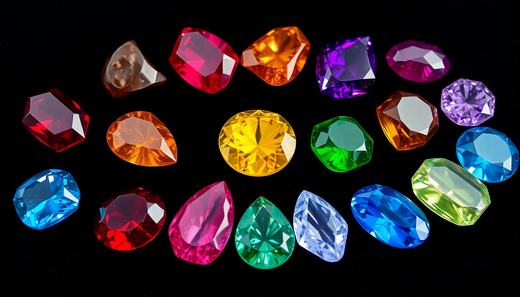
The Glittering History of Birthstones
Birthstones have been captivating us for centuries, weaving together ancient traditions, mystical beliefs, and modern-day meanings. From their biblical beginnings to the polished list you’ll find in jewellery shops today, these gems are so much more than just pretty stones—they’re little pieces of history you can hold in your hand
(or wear around your neck).
 Origins in Antiquity
Origins in Antiquity
The story of birthstones begins thousands of years ago, with roots in biblical history and the "Breastplate of Aaron." This ceremonial masterpiece, described in the Book of Exodus (around the 5th–6th century BCE), was worn by the high priest of ancient Israel. It featured 12 gemstones, each symbolising one of the 12 tribes of Israel. These weren’t just for decoration—each stone was thought to carry divine power, offering protection, guidance, and a spiritual connection for whoever wore them.
From there we jump forward to the Greco-Roman era, where philosophers and astrologers got involved. They began linking the 12 stones not only to the tribes of Israel but also to the zodiac, attributing mystical properties to each gem based on its connection to the stars. And, fun fact—it was actually common for people to wear all 12 stones at once. The idea was that this cosmic collection would keep you protected all year round, no matter what the universe threw your way.
Eventually, though, the practice of wearing all 12 stones started to fade. By the 8th or 9th century, the tradition evolved into something simpler: one gemstone matched to your birth month. Why? Well, some think religious leaders promoted the change, encouraging a more personalised approach to connect people with a single gem that reflected their individuality. Practicality probably played a role too though, let’s face it, very few people would have been able to afford accessories that featured 12 different gemstones!
By the Middle Ages, this one stone for your birth month idea had caught on across Europe, particularly in Poland. It combined ancient beliefs with a growing appreciation for personal symbolism, turning your birthstone into a meaningful keepsake that you could cherish.
 Modern Birthstones
Modern Birthstones
By the early 20th century there were multiple opinions on which stone should represent which month, so in 1912, the American National Retail Jewelers Association (now Jewelers of America) decided to standardise the tradition. They did this to simplify things for shoppers and, let’s be honest, to make birthstones easier to market as meaningful gifts.
This modern list has gone through a few updates since then to reflect new gemstone discoveries, trends, and availability. For example, tanzanite—a stunning violet-blue stone—was added to December’s lineup in 2002. August got a touch of modern flair in 2016 when spinel joined peridot as an alternative option.
The idea was (and still is) to make birthstones feel special and accessible to everyone.
Here’s the current line-up of birthstones:
 A Tradition Worth Celebrating
A Tradition Worth Celebrating
From their ancient origins to their modern-day appeal, birthstones are a testament to our enduring fascination with natures sparkly treasures. They’ve moved from ceremonial breastplates to zodiac connections, from wearing all 12 stones to one deeply personal gem—and they’ve never lost their magic along the way.
